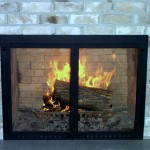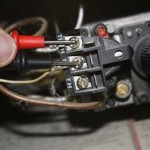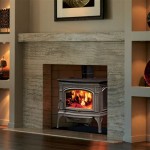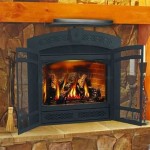Can You Hang A Flat Screen TV Above a Gas Fireplace? Considerations and Best Practices
Mounting a flat-screen television above a gas fireplace is a popular design choice, offering a visually appealing focal point for living rooms and entertainment spaces. However, this installation presents several potential challenges that must be carefully evaluated to ensure the safety and longevity of both the television and the fireplace. This article will explore the key factors to consider before proceeding with such a project, outlining potential risks and providing guidance on best practices for a successful installation.
Understanding the Heat Factor
The primary concern when mounting a television above a gas fireplace is the heat generated by the fireplace. Electronic components are sensitive to high temperatures, and prolonged exposure can significantly reduce the lifespan of a television or cause irreversible damage. The heat rises directly above the fireplace, potentially exceeding the television manufacturer's recommended operating temperature range.
The intensity of the heat depends on several factors, including the fireplace's BTU (British Thermal Unit) output, the distance between the fireplace and the television, and the presence of a mantel or other heat-shielding features. Higher BTU outputs translate to more heat, increasing the risk of damage. A smaller distance between the fireplace and the television also increases the heat exposure. A properly designed and installed mantel can deflect a considerable amount of heat away from the television, offering some protection.
Television manufacturers specify an operating temperature range for their products, typically found in the product manual or on the manufacturer's website. Exceeding this temperature range can void the warranty and lead to component failure. It is crucial to measure the temperature above the fireplace while it is operating at its highest setting to assess the potential risks. This can be done using a digital thermometer or an infrared temperature gun. The temperature should be measured at the intended location of the television.
If the measured temperature exceeds the television's recommended operating temperature, alternative mounting locations should be considered. Options might include mounting the television to the side of the fireplace or on an adjacent wall. If mounting above the fireplace is the only viable option, mitigation strategies should be implemented to reduce the heat exposure. These strategies will be discussed in more detail in a subsequent section.
Assessing Structural Integrity and Mounting Considerations
Beyond the heat factor, the structural integrity of the wall above the fireplace must be carefully assessed. The wall needs to be strong enough to support the weight of the television and the mounting bracket. Most modern flat-screen televisions are relatively lightweight compared to older CRT televisions, but their weight still needs to be adequately supported. The weight of the television plus the weight of the mounting bracket should be verified. Consult the product specifications for both the television and the bracket.
The wall above the fireplace is often constructed with a combination of materials, including drywall, wood studs, and potentially brick or stone facing. Drywall alone is not sufficient to support the weight of a television. The mounting bracket must be securely anchored to the wood studs behind the drywall. A stud finder can be used to locate the studs. If the studs are not located in an ideal position for mounting the television, additional framing may be required to provide adequate support.
If the wall is constructed of brick or stone, specialized anchors and drilling techniques are required. Standard drywall anchors are not suitable for these materials. Masonry anchors designed for brick or stone should be used, and a hammer drill with a masonry bit is necessary to create the mounting holes. It is crucial to follow the manufacturer's instructions for the specific anchors being used to ensure a secure and reliable installation.
The type of mounting bracket should also be carefully considered. There are several types of mounting brackets available, including fixed mounts, tilting mounts, and full-motion mounts. Fixed mounts are the simplest and most affordable option, but they offer limited adjustability. Tilting mounts allow the television to be angled slightly downward, which can improve the viewing angle. Full-motion mounts allow the television to be extended, swiveled, and tilted, providing maximum flexibility in positioning.
The choice of mounting bracket will depend on the desired viewing angle and the specific installation requirements. A tilting mount may be beneficial if the television is mounted relatively high above the fireplace. A full-motion mount may be useful if the viewing area is wide or if the television needs to be adjusted frequently. Regardless of the type of mounting bracket chosen, it is essential to select a bracket that is specifically rated to support the weight of the television.
Mitigation Strategies for Heat and Cable Management
If mounting a television above a gas fireplace is deemed feasible after considering the heat and structural factors, several mitigation strategies can be implemented to minimize the risk of damage and ensure a safe installation. These strategies focus on reducing heat exposure and managing the associated cables and wiring.
Installing a substantial mantel is one of the most effective ways to deflect heat away from the television. The mantel should be made of a non-combustible material, such as stone, brick, or concrete. The size and depth of the mantel will determine its effectiveness in deflecting heat. A wider and deeper mantel will provide more protection. The mantel should extend sufficiently beyond the sides of the fireplace opening to capture the rising heat.
Increasing the distance between the fireplace and the television can also significantly reduce heat exposure. This can be achieved by mounting the television higher on the wall. However, raising the television too high can negatively impact the viewing experience. The ideal viewing height is typically considered to be eye level when seated.
Another strategy is to install a heat shield between the fireplace and the television. A heat shield is a barrier that deflects heat away from the television. It can be made of metal or other heat-resistant materials. The heat shield should be installed in a way that does not obstruct the fireplace's ventilation or create a fire hazard.
Proper cable management is also crucial for a clean and safe installation. All cables and wiring should be concealed behind the wall to prevent them from being exposed to heat and to improve the overall aesthetic of the installation. This can be achieved by using wall-mounted cable management kits or in-wall rated cables and electrical boxes. It is important to consult with a qualified electrician to ensure that all electrical work is performed safely and up to code.
Consider the use of conduit to protect the cables from heat and potential damage. Conduit can be run behind the wall to conceal and protect the cables. Ensure that the conduit is rated for the temperature and environment in which it will be installed. Use grommets or other protective devices where the cables enter and exit the conduit to prevent chafing or damage.
Furthermore, avoid running cables directly behind the fireplace insert or in close proximity to the flue. This can expose the cables to extreme heat, which can damage the insulation and create a fire hazard. Maintain a safe distance between the cables and the fireplace insert or flue to minimize the risk of heat damage.
Installing a fan above the fireplace is another option to consider. A fan can help to circulate the air and dissipate the heat. The fan should be positioned in a way that effectively directs the heat away from the television.
Finally, it is advisable to regularly inspect the installation for any signs of damage or wear. Check the mounting bracket to ensure that it is securely attached to the wall. Inspect the cables and wiring for any signs of heat damage or fraying. If any issues are identified, they should be addressed promptly to prevent further damage or safety hazards.

Can I Mount My Tv Above The Fireplace

Can I Mount My Tv Above The Fireplace

ᑕ❶ᑐ What To Consider Before Mounting A Tv Above Fireplace

ᑕ❶ᑐ What To Consider Before Mounting A Tv Above Fireplace

Can You Put A Tv Over Fireplace Direct Fireplaces

3 Myths About Mounting Tvs Over Fireplaces Monmouth County

Can I Put A Tv Above Fireplace The Ultimate Guide Bonfire

Ortal S Innovative Technology Makes It Safe To Mount A Tv Above Your Fireplace

Can You Put A Tv Over Fireplace Direct Fireplaces

Can I Hang A Tv Over My Fireplace Woodlanddirect Com
Related Posts








